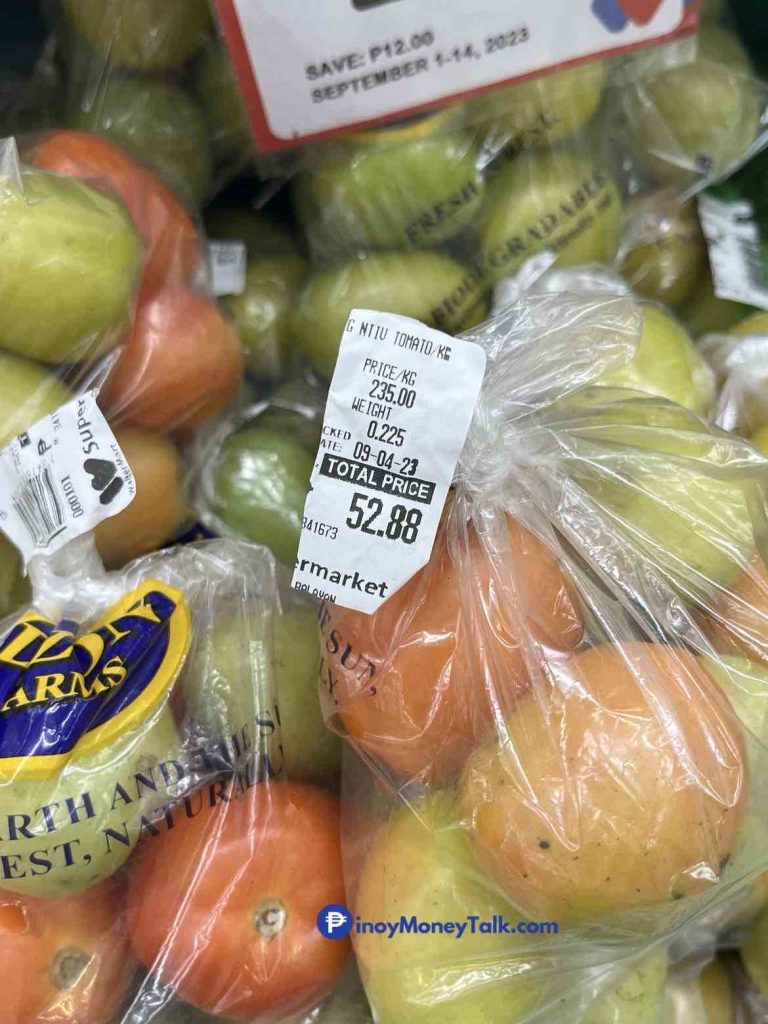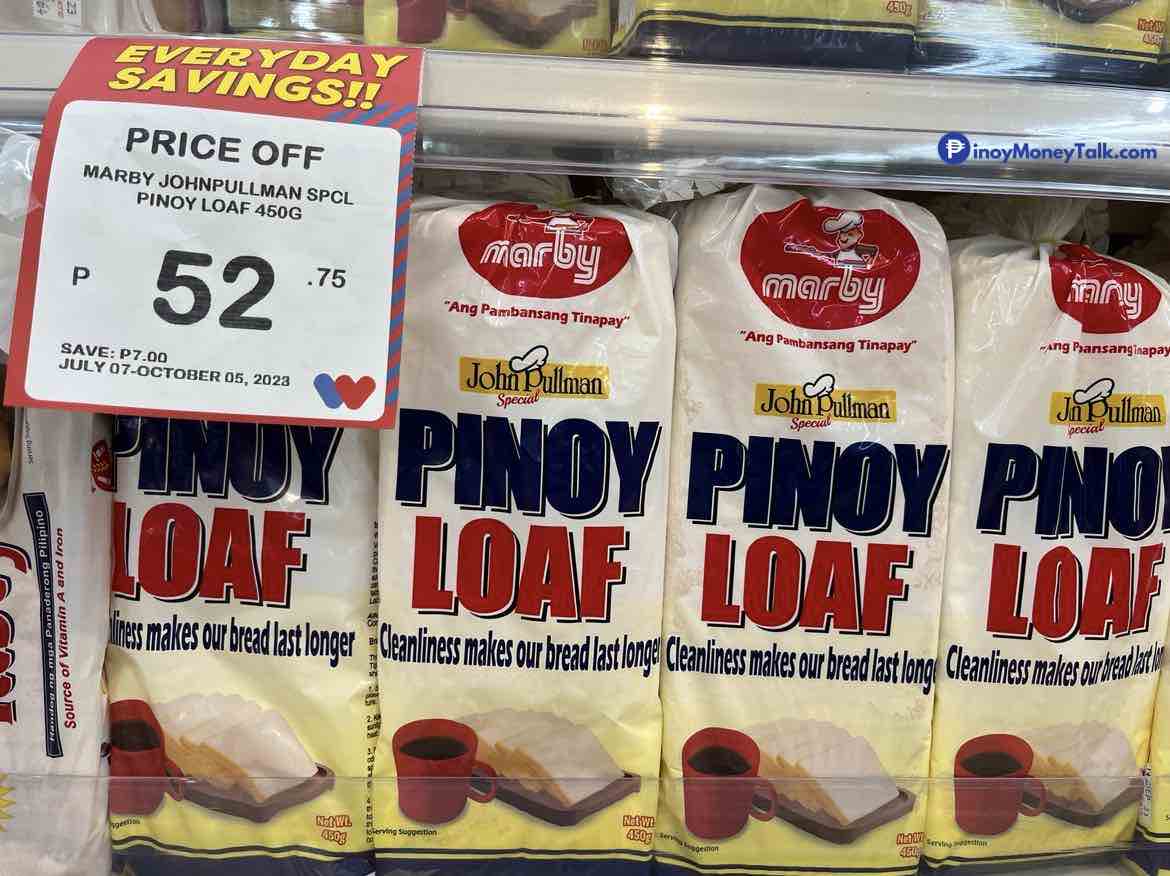Did you know that Filipino households spend around one-third of their income every month on food and groceries? Without a doubt, food represents one of the biggest, if not the biggest, portions of a family’s budget.
A report released by Kantar, a marketing data and analytics company, shows that at the height of the pandemic in 2020, Filipinos allocated up to 37% of their monthly income on food and groceries. In 2022, this has reportedly gone down to 31% but still, it’s evident that food takes up a substantial allocation of Filipinos’ monthly budget.
With constantly rising food prices, it’s undoubtedly a challenge to make the most out of every cent. Now that we’re facing high inflation rates, how exactly can we save on food and groceries? We offer three easy and practical steps that we hope you find useful.
How to Save Money when Buying Groceries
1. Allocate a monthly grocery budget based on a percentage of your take-home pay. 2. Prepare a grocery list with two sections — "Must Buy" and "Splurge". 3. Compute the price per unit and choose the option with the cheaper price per unit.

Tip #1: Allocate a monthly grocery budget based on a percentage of your take-home pay
Start by establishing a monthly grocery budget. Of course, this amount can vary every time, but try to peg it as a certain percentage of your monthly net take-home pay for easy and efficient monitoring.
For example, if your net take-home pay is P25,000 per month, how much do you think you can allot for food and groceries? Make sure to decide on a comfortable level of monthly grocery expenditure.
In our previous article Defining who’s rich: How rich is “rich” in the Philippines? we’ve seen that:
- High-income families spend 20% of their income on food;
- Middle-class families allot 35% of their income on food; while
- Low-income families prioritize food and represents 54% of their monthly income
As mentioned earlier, households in the Philippines on average typically allot around one-third of their income on food. You can begin by allocating, say, 35% of your take-home pay to food and groceries, just like the data about middle-class families.
Take note that this budget should include all your food expenses, such as dining out, snacks, and weekend trips to the grocery. So if your monthly take-home pay is P25,000, you can start with an allocation of P8,750 — that’s 35% x P25,000 — for food and groceries every month.
Having a fixed food budget amount helps you control your expenses. Of course, the key is to make sure you stick to this budget every month.
But what if the budget cannot really cover food grocery items? That’s when we suggest the next tip.
Tip #2: Prepare a grocery list with two sections — “Must Buy” and “Splurge”
Before heading to the grocery, prepare a grocery list containing two sections — “Must Buy” and “Splurge”.
The “Must Buy” items are, of course, the food items which you absolutely need to buy, such as meat, rice, vegetables, condiments and other food items, beverages, toiletries, required household products, etc.
The “Splurge” items are the “luxuries” or “extra items” which you can and should only buy if you still haven’t used up your grocery budget.

Some people at first might have difficulty separating the two. But in reality, some “Must Buy” items can actually be placed in the “Splurge” list. For example, some people would argue that coffee is a necessity — that could be true — but it doesn’t have to be a pricey Starbucks coffee all the time.
For your “Must Buy” list, yes, add coffee, but once you’re at the grocery store, opt for a more affordable 3-in-1 or other cheaper coffee products that can still satisfy your caffeine fix. Include that Starbucks coffee on your “Splurge” list, and only indulge if you still have extra cash after buying all items in your “Must Buy” list.
For families with kids, here’s another example: snacks, chips, and candies may seem like a necessity, and that’s partly true. But you can save money by deferring the purchase of expensive snack items. Instead of the usual chips, chocolates, candies, or ice cream, consider offering your children tasty fruits that are healthier and sometimes even more budget-friendly. You can also prepare delicious fruit-based desserts, as these are sometimes cheaper compared to pricey chocolates or ice cream.
We’re not suggesting you totally abstain from buying chips, candies, and chocolates, but move these items from your “Must Buy” list to your “Splurge” list and only purchase them if your budget allows it.
Tip #3: Compute the price per unit and choose the option with the cheaper price per unit.
Here’s another savings hack: always take the time to compare the price per unit of items you plan to purchase, and choose the option that offers the cheaper price per unit.
Calculating the price per unit is one of the most effective yet underrated strategies you can adopt. This savvy technique not only stretches the purchasing power of your wallet, but also ensures that you get the best value for your hard-earned money.
Here’s how it works: instead of merely glancing at the price tag, take out your calculator or your phone’s calculator and compute the price per gram, liter, or any other relevant unit of measurement. Then, select the product that offers the most value for your money.
Take a look at this example. We compared the prices of four brands of cheese hotdogs below. At first glance, which one is cheaper?

The cheapest appears to be Robina Farms Cheese Hotdogs as it only costs P78.00 per pack. But look at the packaging closely and check the weight of each item. They’re not exactly the same. Robina Farms Cheese Hotdogs is a 250-gram pack, while Purefoods Tender Juicy Cheesedog and CDO Idol Cheesedog are both 500-g packs, and Frabelle Yummy Cheesedog is a 1-kg pack.
This is where calculating the price per unit comes in handy. If you compute each pack’s price per gram, what can you conclude?

Based on the calculations above, Robina Farms Cheese Hotdogs is actually a premium item as it is the item with the most expensive price per unit at P0.312 per gram. Purefoods Tender Juicy Cheesedog has a price per unit of P0.264 per gram, while Frabelle Yummy Cheesedog’s price per unit is P0.209 per gram. In the end, CDO Idol Cheesedog appears to have the cheapest price per unit at P0.192 per gram.
Taste and quality, of course, are still important factors to consider but if you’re looking for grocery items that can give you the best value for your money, opt for items that are relatively cheaper in terms of price per unit.
Extra Tipid Tip! Take advantage of promos or bundles offered by grocery stores. Buying bundled products or bulk items generally lowers the price per unit, saving you some extra cash.

Other “Must Buy” items that are on sale sometimes include free items in your “Splurge” list — which means you can have both products without having to spend additional money! Or your “Splurge” item could include a free item in your “Must Buy” list so, yes, jackpot!
We hope these simple and practical tips can help you secure extra savings when doing your groceries. Happy shopping and happy saving!
Check out other interesting articles that you might like:
- PSE Stocks Performance under each Philippine President
- The Emotional Cycle of Investing: Why People Lose Money in Stocks
- Salary Increases for Gov’t Employees | Check your new salary here
- How to Waive your Credit Card Annual Fee (BDO, BPI, Metrobank, RCBC, Citibank, UnionBank)
